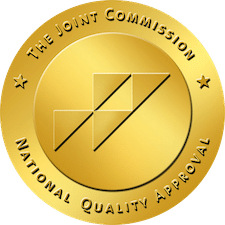
EMDR Therapy in Orange County
EMDR therapy has been growing in popularity across the United States, helping those in mental health counseling recall and recover from traumatic experiences. It can be useful for helping people with PTSD or anyone negatively affected by traumatic memories. Because of its great use, it has become an integrated part of our services at our Mental Health Treatment Center in Mission Viejo, CA.
What Is EMDR Therapy?
Eye movement desensitization and reprocessing, or EMDR therapy, is a form of psychotherapy growing in popularity across the United States. Its technique focuses on the utilization of the body’s sensory inputs. With EMDR therapy Orange County, eye movement is the primary action that patients work with the therapist to recover from their traumatic memories.
EMDR treatment practices are primarily based on theories that surround psychotherapy while incorporating certain concepts taken from cognitive-behavioral therapy or CBT. The effectiveness of EMDR relies on the relationship and bonding trust between therapists and their patients. When both are working together in sync, EMDR works to fight against even the most challenging symptoms that are produced from mental health disorders.
EMDR specialists have reported that using this process of eye movements while trying to think back on the previous traumatic events may be able to target the root cause of the disorder. The ability to alter how the brain processes these traumatic events is then granted to the patients. New techniques to regain control over the intensity of someone’s emotional response can also be developed, even with the stronger and more extreme emotions.
What Can EMDR Treat?
Initially, eye movement desensitization and reprocessing therapies were designed to treat those struggling with traumatic experiences. Through the years and all the studies and innovations done with this form of treatment, there are now a variety of mental health conditions that can be effectively and adequately treated by these methods. The Department of Veteran Affairs states that EMDR may be an appropriate step to take for an individual to receive treatment if they are struggling with mental health disorders such as:
- Substance use disorder and other harmful addictions
- Chronic back pain
- Bipolar disorder
- Post-traumatic stress disorder (PTSD)
- Self-esteem or self-confidence issues
- Panic disorders
- Eating disorders
- Different phobies
- Anxiety and Depression
For example, when EMDR is used as a treatment option for someone who sufferers from frequent panic attacks, the therapist may, at some point, instruct the patient to try and rekindle the thoughts or feelings that may trigger a panic attack.
Suppose incredible amounts of anxiety and other triggering emotions begin to appear when getting behind the wheel of a car. In that case, EMDR may be able to establish new skills or strategies used to help the person settle down and calm down their emotions during the stressful times out on the road, which also provides a safer environment for all the other people who are driving at the same time.
The Eight-Phase Protocol of EMDR
These are organized in a specific way so that everyone can experience the same amount of help and guidance no matter the severity or how intense mental health disorder symptoms may be. The phases can be administered over long periods or condensed down so that the program would only take a couple of days. Of course, this would depend on a couple of contributing factors, including the complexity and severity of the patient’s condition.
The phases are as follows:
1. Client History
This initial phase of EMDR therapy treatment begins by assessing the individual’s current state of their mental health. This includes evaluating the emotional or behavioral shortfalls and the degree of stabilization needed so that the therapist can improve or correct future behaviors to help the patient function better and their psychosocial education.
2. Preparation
This is an important stage of treatment because it is when alliances are formed, and relationships can begin to be developed between patients and the therapists that they will be working with closely. This is also when all the clinical symptoms are explained and taught how the incorrectly stored memories had resulted in the issues they are facing. It is also extremely beneficial for the patient to be briefed on the different aspects of the EMDR therapy process and what they should expect.
3. Assessment
During the initial assessment, patients are, of course, not required to share the detailed specifics of the traumatic event they experienced. Still, it is encouraged that they share with the therapist at least enough information to understand the memory and its accompanying symptoms.
4. Desensitization and Processing
At this stage of the program, the client is typically asked to recount the memories and potentially traumatic experiences and share what the current known triggers are. This is all done while the therapist implements specific EMDR treatment methods, which would include dual-attention bilateral stimulation and physical sensations.
The most common of these include:
- Eye movements
- Tapping
- Auditory tones
While these all are frequently used during this phase, eye movements are the recommended approach to begin with, though.
5. Installation
During this phase, the therapist helps the patient identify their most desired positive beliefs so that they can be magnified and strengthened. When the patient is having the dual attention stimulations administered, they are then told to focus on the specific event along with positive cognitions in an attempt to strengthen the link between the memories and the beliefs about it.
6. Body Scan
The process of bilateral stimulation continues into this next phase as the therapist helps the patient identify any negative physical sensations they may be experiencing. The end result is aiming towards having all that adaptive information link back correctly into the network of memories. This step of EMDR treatment is considered to be complete when all somatic responses from a cynical nature are corrected and eliminated.
7. Closure
While the patient’s overall mental health and stability are closely assessed at the end of each EMDR therapy session, it is not rare for the therapist to recommend they use “affect-change” techniques to try and get the patient to return to having a calm composure when necessary.
8. Re-evaluation
Memory is the primary focus during this stage. It is accessed to investigate whether or not the EMDR treatment effects have produced any improvements and if any new viewpoints have been developed. This phase’s primary goal is to re-evaluate the patient’s state of psychological health and identify any issues to address that have emerged since beginning the therapy treatment.
Get EMDR Therapy Orange County
If you or someone you know has been dealing with trauma, consider EMDR as well as other therapies offered at Southern California Sunrise Recovery Mental Health Center. We commonly serve residents from all over Orange County, CA, but we gladly open our Inpatient Treatment Center to all that need help.
Please, check out our other therapeutic arrangements or go view the wide range of conditions we treat.
We work hard to make our Mission Viejo Facility a pleasant experience for all who need help with their mental illnesses. Give us a call today or send us a message with the form below to see what we can do to help you!
